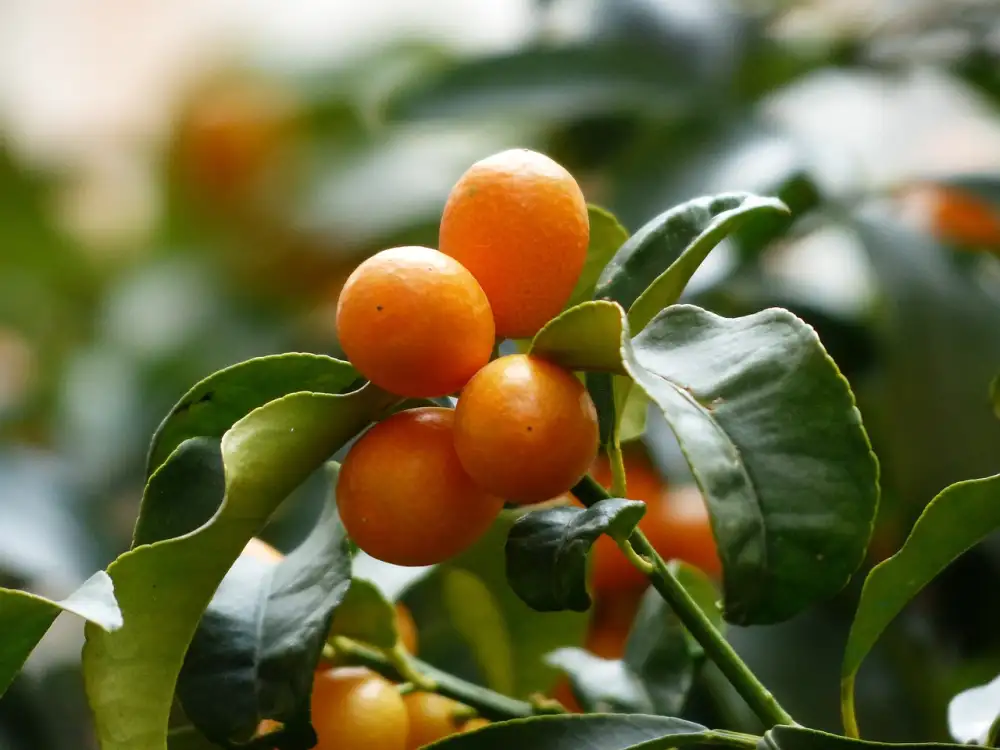Discover the Tangy Delights of Kumquat: A Burst of Citrusy Goodness in Every Bite!

Kumquat, a small citrus fruit, is a hidden gem in the culinary world. With its unique combination of sweet and sour flavors, it adds a burst of tanginess to any dish. This versatile fruit can be enjoyed fresh or used in various recipes, making it a must-try for food enthusiasts. Whether you're looking to add some zing to your salads or create delectable desserts, kumquat is sure to delight your taste buds. Join us on a journey to discover the tangy delights of this extraordinary fruit!
History and Origin of Kumquat
The history of kumquat can be traced back to ancient China, where it was first cultivated over 2,000 years ago. The name "kumquat" is derived from the Cantonese word for "golden orange," which reflects its small, round shape and vibrant color. It was later introduced to other parts of Asia, such as Japan and Southeast Asia, before making its way to Europe and the Americas in the 19th century. Today, kumquat is grown in various regions around the world, including Florida in the United States and Spain in Europe. Its rich history and global journey make kumquat a truly fascinating fruit.
Nutritional Benefits of Kumquat
Kumquats may be small, but they pack a powerful nutritional punch. These tiny citrus fruits are rich in essential vitamins and minerals. One serving of kumquat provides a significant amount of vitamin C, which boosts the immune system and promotes healthy skin. They are also a good source of dietary fiber, aiding digestion and maintaining a healthy weight. Kumquats contain antioxidants that help protect against chronic diseases and reduce inflammation in the body. Additionally, they are low in calories and fat, making them an excellent choice for those watching their waistline. Incorporating kumquats into your diet can contribute to overall health and well-being.
Culinary Uses of Kumquat in Various Cuisines
Kumquat is a versatile fruit that adds a burst of tangy goodness to various cuisines. In Chinese cuisine, it is commonly used in stir-fries and sauces, adding a zesty flavor. In Mediterranean dishes, kumquat is often used in salads or as a topping for grilled meats and seafood. Its unique taste also makes it a popular ingredient in jams, marmalades, and chutneys. Whether you're exploring Asian flavors or experimenting with fusion cuisine, kumquat can elevate your dishes with its citrusy charm.
Popular Kumquat Recipes to Try at Home
1. Kumquat Marmalade: Transform the tangy fruit into a delightful spread by simmering kumquats with sugar and water until thickened. Spread it on toast or use it as a topping for desserts.
2. Kumquat Salad: Toss sliced kumquats with mixed greens, toasted almonds, and crumbled feta cheese. Drizzle with a citrus vinaigrette for a refreshing and zesty salad.
3. Kumquat Salsa: Combine diced kumquats with red onion, jalapeno, cilantro, and lime juice for a vibrant salsa that pairs perfectly with grilled fish or chicken.
4. Candied Kumquats: Simmer whole kumquats in a simple syrup until tender and translucent. Serve them as a sweet treat on their own or use them as a garnish for cakes and desserts.
5. Kumquat Glazed Chicken: Create a tangy glaze by combining kumquat juice, honey, soy sauce, and ginger. Brush it over chicken before roasting or grilling for a flavorful twist on classic poultry dishes.
These recipes showcase the versatility of kumquats and offer unique ways to incorporate their citrusy goodness into your culinary repertoire.
Growing and Harvesting Kumquat: Tips for Cultivation
Kumquats are relatively easy to grow, making them a great addition to any home garden. They thrive in warm climates and can be grown both in the ground or in containers. When planting kumquat trees, choose a sunny spot with well-draining soil.
To ensure successful cultivation, water the tree regularly, especially during dry spells. However, be careful not to overwater as this can lead to root rot. Fertilize the tree with a balanced citrus fertilizer three times a year – in early spring, mid-summer, and early fall.
Pruning is essential for maintaining the shape and health of the tree. Remove any dead or diseased branches and thin out crowded areas to promote airflow. Prune after harvest to encourage new growth for the following season.
Kumquats are ready for harvest when they reach their full color and are firm to the touch. Gently twist or cut the fruit from the branch to avoid damaging it. Remember that kumquats can stay on the tree for an extended period without losing quality, so you can enjoy fresh fruit throughout the season.
By following these cultivation tips, you can have a bountiful supply of tangy kumquats right at your fingertips!
Storing and Preserving Kumquat for Extended Shelf Life
To ensure the longevity of your kumquats, it's essential to store them properly. These little citrus gems can be kept at room temperature for a few days, but if you want to extend their shelf life, refrigeration is key. Place them in a perforated plastic bag and store them in the crisper drawer of your refrigerator.
If you have an abundance of kumquats and want to preserve their vibrant flavor for longer, consider making kumquat marmalade or pickling them. Kumquat marmalade is a delightful spread that can be enjoyed on toast or used as a topping for desserts. Pickled kumquats add a tangy kick to salads, sandwiches, or even charcuterie boards.
Another method of preserving kumquats is by freezing them. Simply wash and dry the fruit thoroughly, then place them in an airtight container or freezer bag. They can be stored in the freezer for up to six months without losing their taste or texture.
By storing and preserving your kumquats properly, you can enjoy their tangy goodness all year round and add a burst of citrusy flavor to your culinary creations.
Fun Facts and Trivia about Kumquat
- The word "kumquat" comes from the Cantonese language, meaning "golden orange."
- Kumquats are the only citrus fruits that can be eaten whole, including the peel.
- Despite their small size, kumquats pack a punch of vitamin C, with just one fruit providing over 100% of the recommended daily intake.
- Kumquats are often used as decorative plants during Chinese New Year celebrations for good luck and prosperity.
- In Japan, kumquats are considered a symbol of good fortune and are given as gifts during the winter season.
- The kumquat tree is highly resilient and can withstand temperatures as low as 20°F (-6°C).
- Kumquats have been grown in Florida since the late 19th century and are now widely cultivated in many parts of the world.
- The peel of the kumquat contains essential oils that give it a distinctive aroma and flavor.
- In traditional Chinese medicine, kumquats are believed to aid digestion and improve overall health.
- Kumquats have been used in various alcoholic beverages, including liqueurs and cocktails.
In conclusion, the tangy delights of kumquat are a must-try in your culinary adventures. This unique and versatile fruit adds a burst of citrusy goodness to any dish. Whether you're using it in salads, sauces, desserts, or even cocktails, kumquat brings a refreshing and zesty flavor that will leave your taste buds wanting more. With its rich history, nutritional benefits, and various culinary uses, kumquat is truly a gem in the world of fruits. So why not embrace this tangy delight and let it elevate your dishes to new heights? Get creative with kumquat and discover the endless possibilities it offers.
Published: 02. 12. 2023
Category: Food



